- Kirikiriroa/Hamilton
- Tokoroa
- Rāhui Pōkeka/Huntly
- Port Waikato
- Coromandel Peninsula
- Overview
- Details
- Impact
- Reflections
- Media
A multi-community artist-in-residence pilot that enabled artists to work with and alongside their communities.
Overview

Introduction
Whiria te Tāngata (weave the people together) was a multi-community artist-in-residence pilot to enable 10 artists to engage in creative practice and develop work with and alongside their communities.
Funded by Manatū Taonga – Ministry for Culture and Heritage’s Te Urungi Innovation Fund in 2022, this pilot began in December 2022 and wrapped in December 2023.
Read more
Close

Purpose
Whiria te Tāngata looked at new models of patronage for artists and creative practitioners who were delivering work with and for the diverse communities of Waikato.
This was also connected to international examples of pilot programmes that were exploring ‘guaranteed income for artists’ or ‘artist wage‘ or ‘artist UBI‘ type initiatives.
It provided a pathway to further support the recognition of the value arts, culture and creativity bring to our communities. We saw how this had a measurable impact on the sector (in areas of sustainability, investment, support, and visibility), but also has impacts in the wider community (mental health, lack identity, connection and social cohesion).
This was not structured around the gig-based economy, project-based funding models, and commercial systems that force creative practitioners to navigate a balance between sustainability and accessibility. It was structured around intrinsically valuing this work, understanding the inherent impact potential, and shaping the structure, funding and support mechanisms to enable community-embedded creative practice to thrive. This was about ensuring our artists had a clear overall vision and community connection, but also allowing sufficient flexibility for practitioners to respond to changing community circumstances, instead of requiring them to deliver on a predetermined plan with pre-imagined outputs.
Read more
Close

Objective
This was a social innovation project looking at facilitating community benefit through new models of patronage for artists and creative practitioners who are delivering work with and for the diverse communities of the Waikato.
It was developed to help demonstrate the community impact that is possible when artists are supported to do their work, weaving in the wellbeing impacts that having accessible local creative activity can achieve.
We saw the need for more accessible and engaging art-making and creative practice in local communities and we addressed this problem directly by proactively enabling the rippling benefits of arts activation to flow through communities with our Whiria te Tāngata artists as a conduit, supporting social cohesion, wellbeing benefits and a sense of place.
Read more
Close
Details

Structure
This Waikato-based pilot supported 10 artists in 10 diverse communities, who were paid for one year to deliver their creative activities with and for their communities they were already connected to.
Alongside receiving a stipend for the year (part-time wage supporting 20hrs a week), each artist was paired with an experienced artist mentor who was also paid for their service in supporting the growth of their artist.
Each artist created a programme of activity they would deliver throughout the year which included workshops, events, creation sessions, guest tutors/sessions and more. This programme of activity was designed to be flexible and move with the needs of the community, allowing each artist to create opportunities, space, connection, pathways and positive impact in their hapori with arts, culture and creativity.
The wrap-around support was delivered through Creative Waikato by creating opportunities such as communities of practice wānanga, advice from industry guests and having a project lead dedicated to Whiria te Tāngata, ensuring seamless delivery.
The structure of Whiria te Tāngata was linked to our 2023 research into creative professionals. We have found that social connection and mental health can have a mutually beneficial relationship. Artists, like all people, thrive through community connection. This is of course achieved through the delivery of projects with the community, but beyond that it is important to have a peer support network of people working in similar spaces, exploring similar things to feel that deeper sense of connection that helps to address increasing experiences of isolation. The Creative NZ ‘Profile of Creative Professionals’ highlights the risk of burnout in our creative community. With that understanding, the design of this programme was to address some of this risk that emerges from inconsistent funding and support.
Read more
Close

Communities
The ten artists worked in varying communities located throughout the Waikato region.
During the expression of interest process, each artist had identified the communities they would be working with. This was through previous connection and work these artists were already doing and Whiria te Tāngata provided an opportunity for these artists to further this work with their communities.
Read more
Close
Impact

Social Impact Research
We were interested in identifying the strengths of the Whiria te Tāngata programme, and the spaces where communities need continued support.
In addition, we sought to provide evidence to strengthen the case for future artist in community residence programmes. Creative Waikato teamed up with research experts, Huber Social, to understand the social impact of the programme on its participants, artists and mentors.
Huber Social embraces a whole-of-life approach, and use a shift survey approach where most participants responded to the survey early in the programme, and then again, at the end. Where we were unable to gather early data from participants, we were able to use the local baseline data from the research Huber Social and Creative Waikato gathered in 2022. This allowed us to hear from the respondents, and their subjective experience about the value of the programme in their lives, and the impact it had on their wellbeing.
With the support of the Creative Waikato team, Huber worked closely with community to learn what matters most to Waikato residents in terms of their own understanding of their holistic wellbeing. These outcomes connected with the 2023 report, and so allowed us to use this existing research as a useful baseline. By working with Huber Social, we were able to ensure sound ethical and quality assurance practices. In addition, the research team were able to adapt the process to support community, aiding accessibility and enabling rangatahi participation through the use of focus groups.
The survey was shared with communities from every project, and included four deep-dives, focused around: connection to culture through storytelling for migrant and cross-cultural communities, connection within geographically-isolated communities, connection to culture and child-rearing for māmā, and connection to Māori and Pasifika culture for Moana Pasifika youth.
In addition, the programme artists and mentors responded to surveys customised to their experience as enablers, and connected to the 2023 findings around the wellbeing of creative professionals in Waikato. The results from each of these surveys are a mix of quantitative (numbers-driven) and qualitative (story-driven) findings.
The full report is packed full of useful information, but what follows are some standout statistics and examples.
Read more
Close

Community Impact: Stats and Examples
Whiria te Tāngata made significant community impact, supporting social cohesion, community wellbeing and connection.
The report presents several key findings:
– Throughout 2023, approximately 808 participants engaged with the programme, and, of these, 105 participants contributed to impact measurement. 29% identify as Māori or Pasifika.
– Across the resident artists, half are based in urban areas and half in regional areas, half specialise in visual arts, and half in the performing arts.
– WTT respondents reported more positive satisfaction with life. 85% of community participants reported feeling somewhat to strongly satisfied with their current life conditions. This was higher than both regional-wide (78%), and nation-wide (81%) results. Positive trends for overall average wellbeing were seen across resident artists, and some deep-dive groups.
– Change occurring where it mattered most for artists’ wellbeing. Artists reported positive change across factor areas most predictive of increased overall wellbeing, where artists identified a strengthened sense of belonging within the sector, connection to place, and reduced loneliness; as well as improvements across previously-identified challenge areas for creative professionals.
– WTT participants reported significantly strengthened connection to community, place, and opportunities for belonging and relationships. This was not limited to belonging to a group alone, but extended to one’s broader community and place.
‘I’m more involved with my community and roots now than before’
‘The project has provided me an opportunity to connect with my wider cultural community and form bonds I may not have otherwise, especially with some social divides that exist.’

– WTT supported mental wellness outside the mental health system. Qualitative data offered resounding evidence of the way engaging in arts and creativity through WTT was an effective tool to process emotions and support community participants’ mental wellness, with trends in mental wellness factors bolstering this.
– Funding community-based creative practice leads to societal outcomes.
– WTT effectively delivered on its impact goals, building more connected, cohesive and culturally-rich communities.
This research report adds valuable quantitative data to our understanding of the wellbeing impacts of the programme. It is important to note that there are many other ways to understand impact, and that this report offers us one window out of many.
In order to provide the fullest picture possible, we gathered testimonials, stories and quotes from the programme, and produced a feature-length documentary, ‘Weaving the People’.
Read more
Close
Reflections

Wrap Up
Whiria te Tāngata demonstrates what is possible when community wellbeing is prioritised, and creatives are supported and resourced to serve community.
The impacts of the programme continue beyond its close, with participants, artists and mentors bringing forward their experiences and learnings, to have wide-reaching ripples of positive impact.
With investment to allow for sustained and sustainable delivery, programmes like Whiria te Tāngata are powerful forces for social good.
Read more
Close

Testimonials
‘I would be so bold as to say, that Whiria te Tāngata is actually more than just artists working in community. I think it’s a model for rehabilitation for the whole of society’ – Leafa Wilson
‘It’s clearly having such a beneficial effect way beyond the individual artists, rippling out all through the community’ – Jo Randerson
‘It’s been an absolute pleasure to […] experience just a little of what these amazingly talented, passionate, compassionate people are doing for such a diverse range of the community through the Waikato. – Suzy Cato
‘The positive ripple effect from this project was huge for artists and community members as events and collaborations are continuing to occur even though the project has finished’ – WTT mentor
‘I wasn’t expecting the sense of kinship and connection with the organisers and the other participants. A new community was built here… I felt I was meeting a family I hadn’t known I’d been a part of all along.’ – WTT mentor
‘It has been the biggest healing journey I have been involved in’ – WTT participant
‘Living with chronic pain I can escape the “always there” pain and focus on what’s at hand. When I am creating.’ – WTT participant
‘To find a community where we can interpret our culture and make our roots known to the world’ – [translated] Whiria te Tāngata participant
‘I feel like I am a creative and without this programme I would not have had a chance to enhance my wellbeing in this way or to connect with others outside of my work’ – WTT participant
‘The programme enabled me to engage more in art practices with fellow collaborators and enjoy creating together, being our authentic selves, supporting each other and learning.’ – WTT participant
‘[Whiria te Tāngata] Has given me the tools to use to release my emotions and thoughts within the moment.’ –WTT participant
‘The impact it has had on my babies is incredible-having people be able to say their names properly AND have the patience to do cool art with them has grown their confidence so much and they engage with art a lot more at home now too which has been really cool to see. We love it.’ – WTT participant
‘I finally found a community of other young creatives that think the same as me, look like me and IĒNA is the first place I have felt authentically celebrated and proud to be Pasifika.’ – WTT participant
‘It’s really given me that boost that I need to get myself out there. I can see this really helping me to go forward and actually put myself out there. And it means a lot to me that I’ve been given the strength to be able to do that for myself.’ – Jasmine Nea, WTT participant
“Programmes like this give people something to look forward to in their week,” she says. “They know they’re coming to a safe space with a group of people who are also looking for creative outlets, looking to improve their wellbeing, and wanting to create new connections within their communities.” – WTT Artist Fay Purdie-Nicholls, from Sam Brooks, The Spinoff, Creative Waikato’s Whiria te Tāngata bears the fruit of community investment.
‘I have made good connections with the local Iwi. I’ve been involved in public art events. I’ve met more artists living in the community. I’ve met more people interested in engaging with the arts’ – WTT Artist
‘[My involvement] has given me so much more confidence moving forward in collaborating with other creatives around me. [The confidence] to just keep having conversations with people about big creative ideas.’ – WTT Artist
‘It’s a really really strong tool that brought a lot of the teenagers in the groups to bond with their parents, it brought a lot of the elderly people to share stories and language and struggles of being alone, basically, in a community that speaks english while they are unable to speak the language.’ – WTT artist Ifat Vayner-Itzkovitch
‘You can see the growth in confidence is some of the children who participated in Ifat’s puppet show. When I first saw them they were happy playing with puppets behind the screen, but actually some of them ended up joining school’s operatic, joining school talent shows after the show, or outside of the show, because they were growing in that confidence. And we’re talking about some of these children, English is their second language. For that to occur, there is some huge change in their ability to feel at home here in Aotearoa as well. Not just the kids, but some of the parents became natural actors, and came out of their shells. From the time I went to watch them doing the rehearsals of the puppets, all the parents were sitting back and letting the kids do it. At the final show, oh my gosh, the parents were right in there doing the show, they’d made the costumes. So there was this whole cohesion of not just community, but creativity that had occurred.’ – WTT project lead Leafa Wilson
Read more
Close
Media

Documentary
Part of the original design of this pilot was to tell the story of impact in a range of ways. This included formal reporting, reflective storytelling, quantitative and qualitative research, and a documentary film project.
We enlisted the assistance of award-winning local filmmaker Dan Inglis to help us document the process of this year of activity.
At first, we weren’t entirely sure what the final output would be. Perhaps it would be short documentaries about each artist and their journey, perhaps it would be more based around themes and community engagement. We didn’t restrict the final output so that it could be responsive to the story that emerged.
Through that process, it became clear that the most engaging and effective form of storytelling would be in a long-form single documentary that wove all the different stories together.
Bringing together the artist’s experience, with community engagement, mentor reflections and the organisational vision. It was a glimpse into the range of case studies that this project engaged in, and shows the scope, range and impact of what took place through this project.
“Weaving the People” was directed and edited by Dan Inglis and shares how projects like this can make an exciting and valued contribution to the lives of people in our communities.
Read more
Close

News Coverage
A collection of articles written about Whiria te Tāngata from 2022 – 2023
You’re going to want to hear about Whiria te Tāngata – Creative Waikato
Artists call for overhaul of funding systems for creatives across a range of industries – Newsroom
Expressions of Interest for Whiria Te Tāngata are open!! – Creative Waikato
Causing something to start – Creative Waikato
The Face of Social Impact – Artists Announced for Whiria te Tāngata – Creative Waikato
Whiria te Tāngata: Meet the Artists – Creative Waikato
NZ’s first multi-community artist-in-residency programme announced – Indian Newslink
Diverse group selected for living wage artist-in-residence scheme – Stuff
Waikato creatives receive part-time salary to do their special artistic magic – Waikato Herald
Whiria te Tāngata: Meet the Mentors – Creative Waikato
Emiko Sheehan makes time to create – The Spinoff
Artists, connection and community – an observation of Whiria te Tāngata – Creative Waikato
Culture and Creativity 2023 – The Green Party
What if artists earned the same as everybody else? – RNZ
That’s a Wrap… Around – Creative Waikato
Unleashing moments of creativity: Enriching the lives of young mothers and their tamariki – Wintec | Te Pūkenga
Creative Waikato’s Whiria te Tāngata bears the fruit of community investment – The Spinoff
Emiko Sheehan – Satellites
Innovative Waikato scheme pays artists basic income – RNZ Culture 101
Read more
Close
Timeline
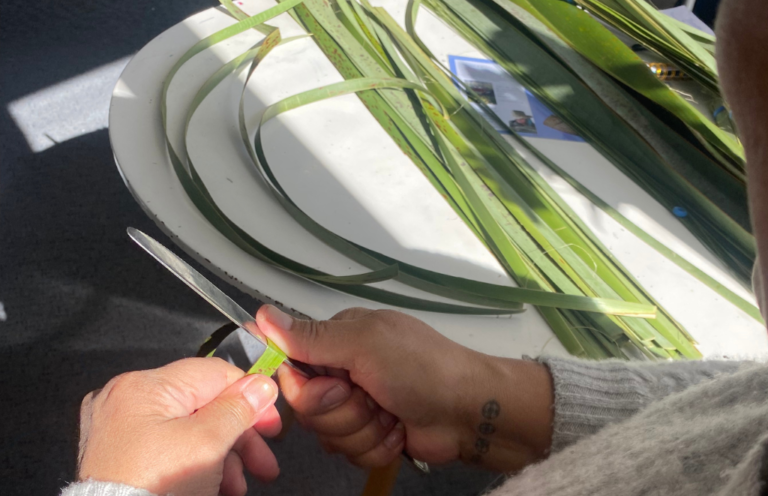
June 22
Commencement of MCH Innovation Funding

August 22
Announcement of Whiria te Tāngata

September 22
Expressions of Interest open
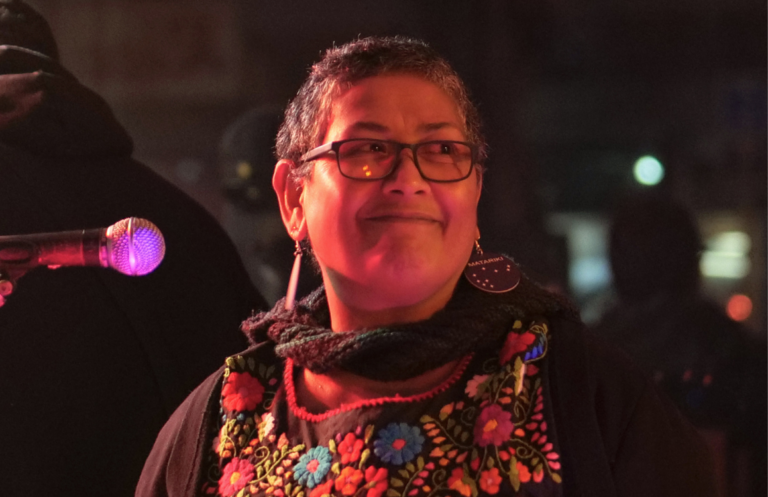
October/November 22
Appointment of project lead Leafa Wilson
Selection of artists against selection framework
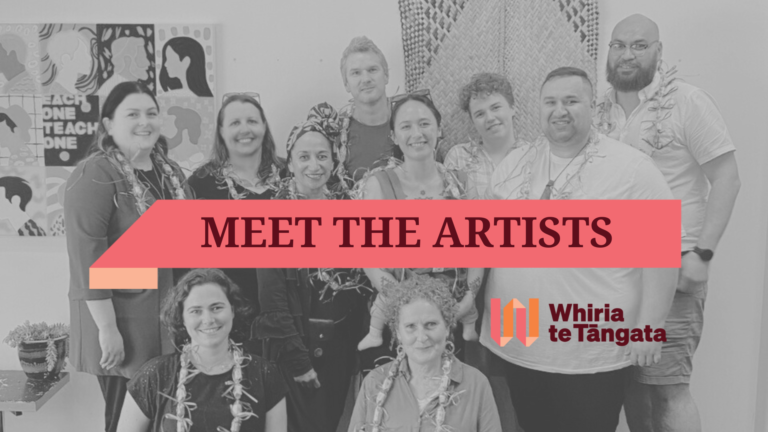
November 22
Announcement of 10 selected artists
First wānanga for artists, Creative Waikato Staff and Board
Documentary filming starts
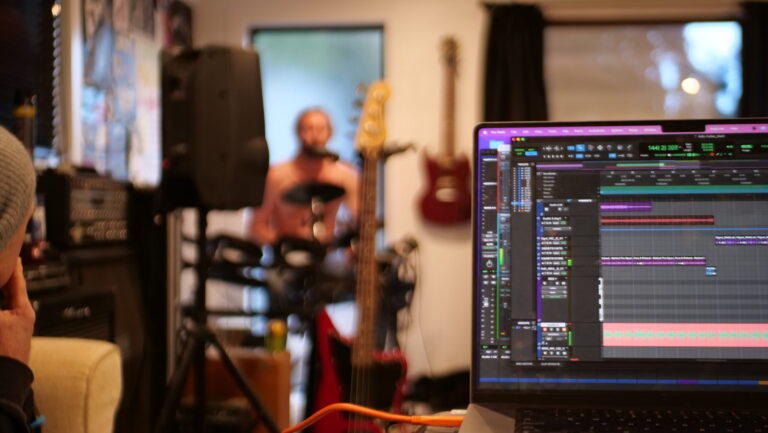
December 22
Artists’ projects commence
Projects go through further refinement and monthly reporting
Engagement with Huber Social for impact measurement
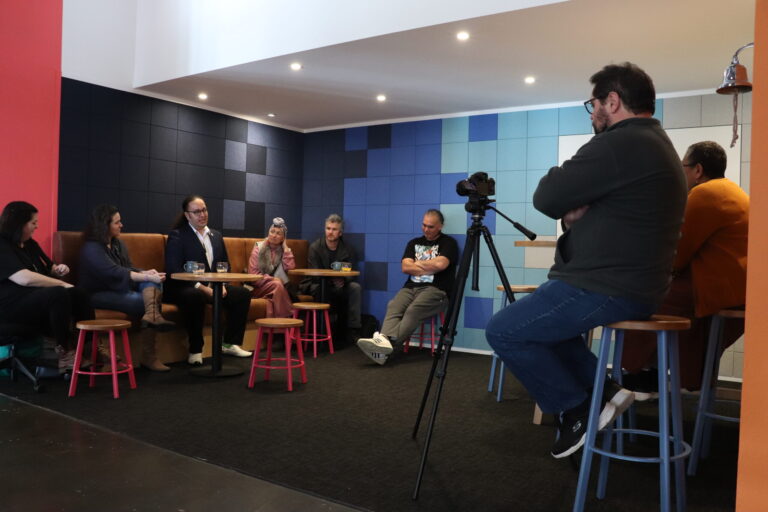
February 23
Second wānanga
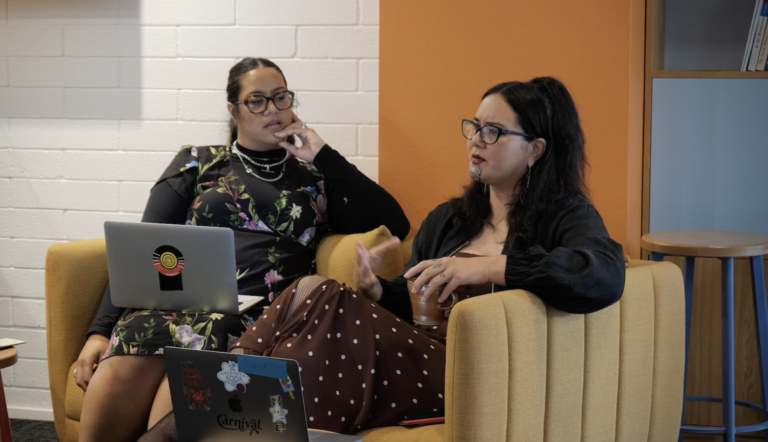
April 23
Third wānanga
Including guests Bonni Tamati and Mel Tangaere Baldwin
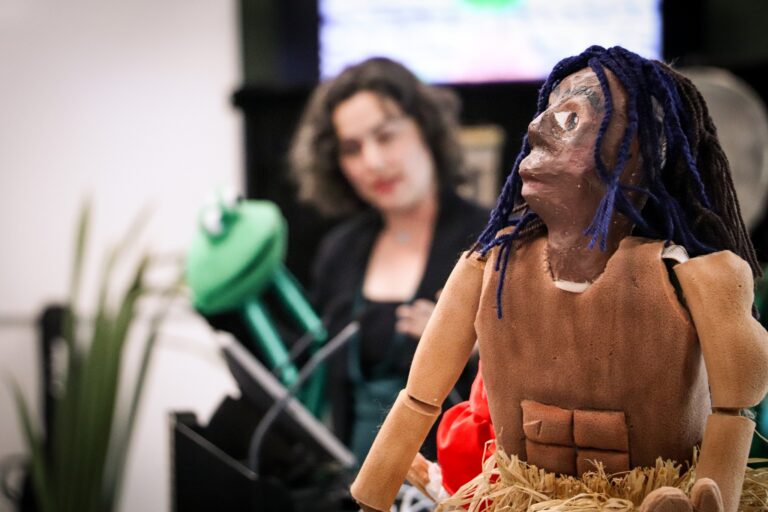
June 23
Fourth wānanga
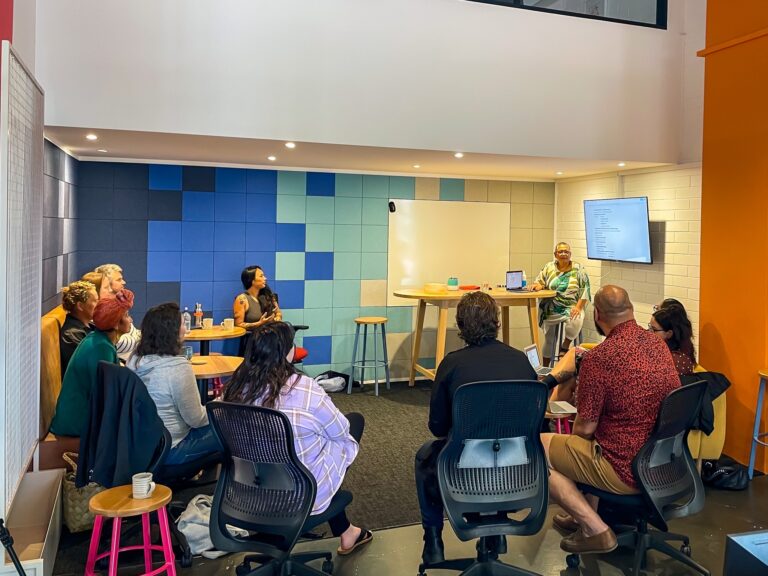
July 23
Fifth wānanga

November 23
Final wānanga
Additional industry guests invited for artists to talk about their creative practice and future connections
Final celebration for artists, mentors, Creative Waikato Staff and Board including presentations from all artists
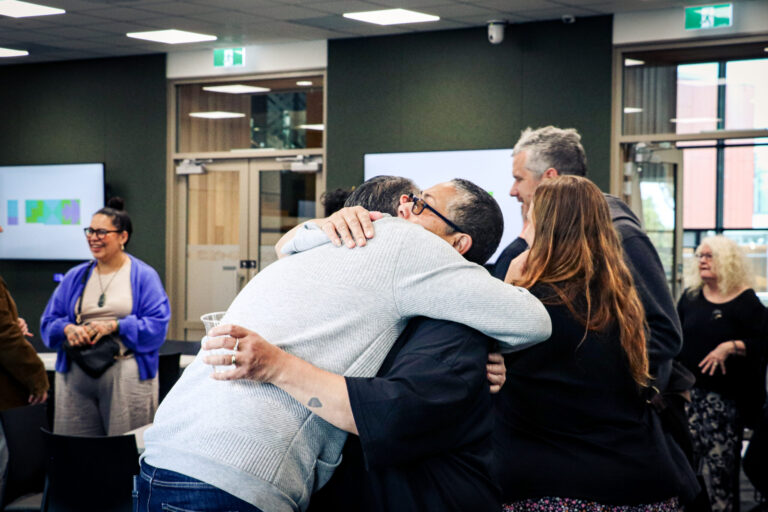
December 23
Final wrap up
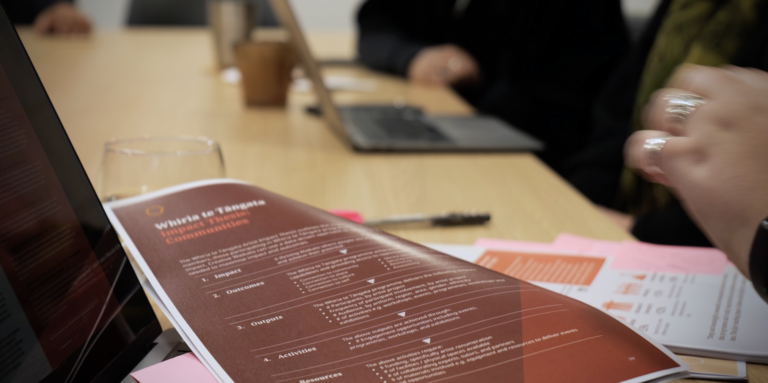
May 24
Huber Social Impact Report
Finalised and presented to Creative Waikato staff
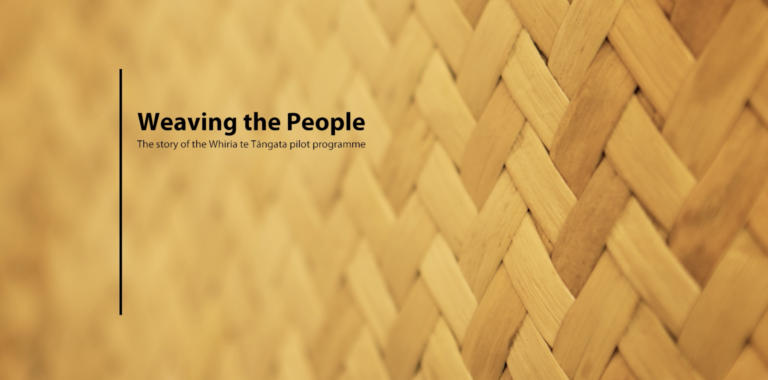
June 24
Documentary film completed

June 22
Commencement of MCH Innovation Funding

August 22
Announcement of Whiria te Tāngata

September 22
Expressions of Interest open

October/November 22
Appointment of project lead Leafa Wilson
Selection of artists against selection framework

November 22
Announcement of 10 selected artists
First wānanga for artists, Creative Waikato Staff and Board
Documentary filming starts

December 22
Artists’ projects commence
Projects go through further refinement and monthly reporting
Engagement with Huber Social for impact measurement

February 23
Second wānanga

April 23
Third wānanga
Including guests Bonni Tamati and Mel Tangaere Baldwin

June 23
Fourth wānanga

July 23
Fifth wānanga

November 23
Final wānanga
Additional industry guests invited for artists to talk about their creative practice and future connections
Final celebration for artists, mentors, Creative Waikato Staff and Board including presentations from all artists

December 23
Final wrap up

May 24
Huber Social Impact Report
Finalised and presented to Creative Waikato staff

June 24
Documentary film completed
Ngā mihi nui
Developed in 2022 by Creative Waikato with funding from the Ministry for Culture and Heritage Innovation Fund

Creative Waikato would like to thank Manatū Taonga, Ministry for Culture and Heritage for their vision and trust with this pilot.
Whiria te Tāngata is a testament of investment in people and the transformational effects it can have.
We know that the ripple effects are felt far and wide. The impact of this investment will continue to grow not only with those directly involved, but as a piece of hope that investments like this can and should be developed now and into the future.
If you would like to know more about Whiria te Tāngata, please get in touch with us.
Developed in 2022 by Creative Waikato with funding from the Ministry for Culture and Heritage Innovation Fund


